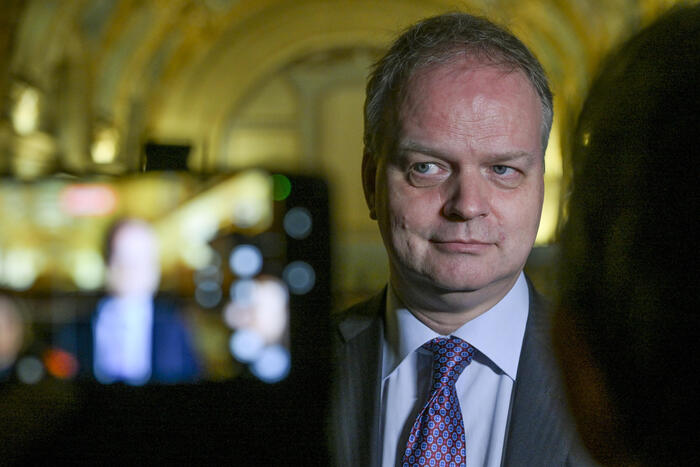A gold mine for archaeologists and art historians.
While the Uffizi Museum in Florence is carrying out renovation and expansion work, three extraordinarily well-preserved frescoes, dated between the 16th and 17th centuries, have appeared behind thick layers of plaster.
Read also: A new pyramid discovered on the Mayan site of Tikal
Among them, a clipeus (portrait painted in a large medallion) of the cardinal and later Grand Duke of Tuscany, Ferdinand I de Medici (1549-1609), as well as a full-length portrait of his son, Cosimo II (1590-1621).
This last work shines by the detail of its realization.
Two women frame the central figure, symbolizing on one side the she-wolf of Siena and on the other the lion of Florence.
Read also: Rouen, capital of Florentine painting
These are not the only treasures of this site. Medieval remains and graves from the early 17th century have also been found. It all started in 2003, with the
Nuovi Uffizi
(“new offices”) project, led by the architects Chiara Laura Tettamanti and Francesco Fortino. The objective is to enlarge, rearrange and restructure the decrepit buildings, built on the initiative of the first Grand Duke of Tuscany, Cosimo I (1519-1574), known as “the young”. Asked by
Le Figaro
, the German art historian Eike Schmidt, director of the museum since 2015, evokes the part where the frescoes were made.
"These are rooms in previously dedicated to the judiciary and administrative meetings,
" he said
.
The fresco of Ferdinand I of Tuscany, obviously painted in the 16th century, is too damaged to identify its author.
Florence Uffizi Museum
In 2016, the works were launched, with the greatest caution.
"We knew that vestiges existed in the basement, which explains the time that was taken to start the work"
, further details the director.
This renovation must also be
"a very important step"
concerning access to the museum.
Thanks to this redevelopment, the entrance must be moved to the side of Ponte Vecchio and the Arno river.
2000 m², finally, will be recovered, allowing the opening of eight new rooms in the Ponente wing, fourteen on the ground floor of the Levante wing and twenty-one more in the basement.
Read also: Barbara Jatta: "The Vatican Museums are cultural diplomacy"
But during the works, wells, a staircase and a medieval cellar, but also tombs appear.
“We didn't yet know what we were going to come across.
And then, a few months ago, we discovered these walls and burials ”
, dating from the end of the 16th and the beginning of the 17th century, says Eike Schmidt, adding that
“ the tombs unearthed in recent months have been restored and preserved ”
.
A medieval cellar, a staircase and wells were brought to light by the site.
Florence Uffizi Museum
Burial discovered during the works, during the year 2020. Uffizi Museum in Florence
Read also: Guadeloupe: 113 pre-Columbian graves discovered during preventive excavations
The discovery of the frescoes is completely unexpected. Apart from the portraits of the Grand Dukes of Tuscany, a third work, with motifs representing ants and vegetation has been unearthed. Remains a mystery. To whom do we owe these paintings apparently made during the reign of the Holy Roman Emperor, Peter-Leopold of Habsburg-Lorraine? They could be the work of the painter Bernardino Poccetti (1548-1612), one of the masters of Italian fresco, or that of one of his pupils.
“A certain number of expertises still remain to be done. But the Lorraine green
[which makes up the fresco,
Editor's note
]
was not really in fashion after the 1800s. In addition, the coating that covered the fresco was in darker colors, traditional from the second half of the 19th century.
Pastel and light colors were no longer in fashion, which is probably why they were repainted. "
17th probably during the reign of Peter-Leopold of Habsburg-Lorraine, Holy Roman Emperor Florence Uffizi Museum
If the end of the work is scheduled for 2024, the institution's exhibitions will be accessible again from Tuesday, May 4, according to a press release from the museum, while Italy begins its gradual deconfinement. The three frescoes, located in the new entrance to the institution,
“will therefore be visible to the public when the museum reopens. They will be part of the normal visit,
enthuses the director of the institution
. They will be in a room which is part of the ticket office ”.




/cloudfront-eu-central-1.images.arcpublishing.com/prisa/CGZXVY2SQF7FMDFHUCJWLHPKOE.jpg)



